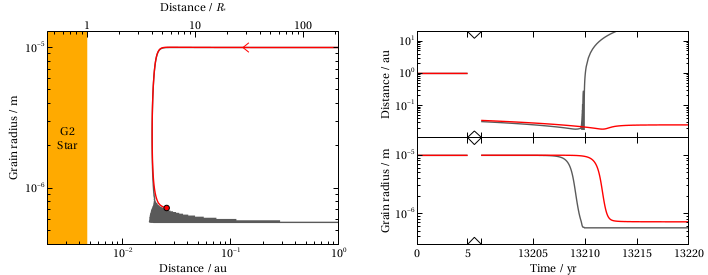
Details: https://arxiv.org/abs/2008.07505

|
| One fifth of main-sequence stars display excess near-infrared emission of unknown origin. We investigate whether the emission could arise from hot dust trapped in gas, where the gas originates from sublimating material near the star. The figure shows the evolution of a dust grain close to a star in the presence (red) and absence (grey) of gas; if no gas is present, then the grain migrates inwards under radiation forces, shrinks as it sublimates, and is finally blown out of the system. If gas is present, then the grain migrates and shrinks as before, but then gets trapped in gas. We find that the mechanism naturally reproduces many features of inferred hot dust populations, and can explain observations for Sun-like stars. However, for brighter A-type stars the trapped grains are 5−10 times too large to explain the observed emission, and the mystery still exists. |
|
Details: https://arxiv.org/abs/2008.07505 |